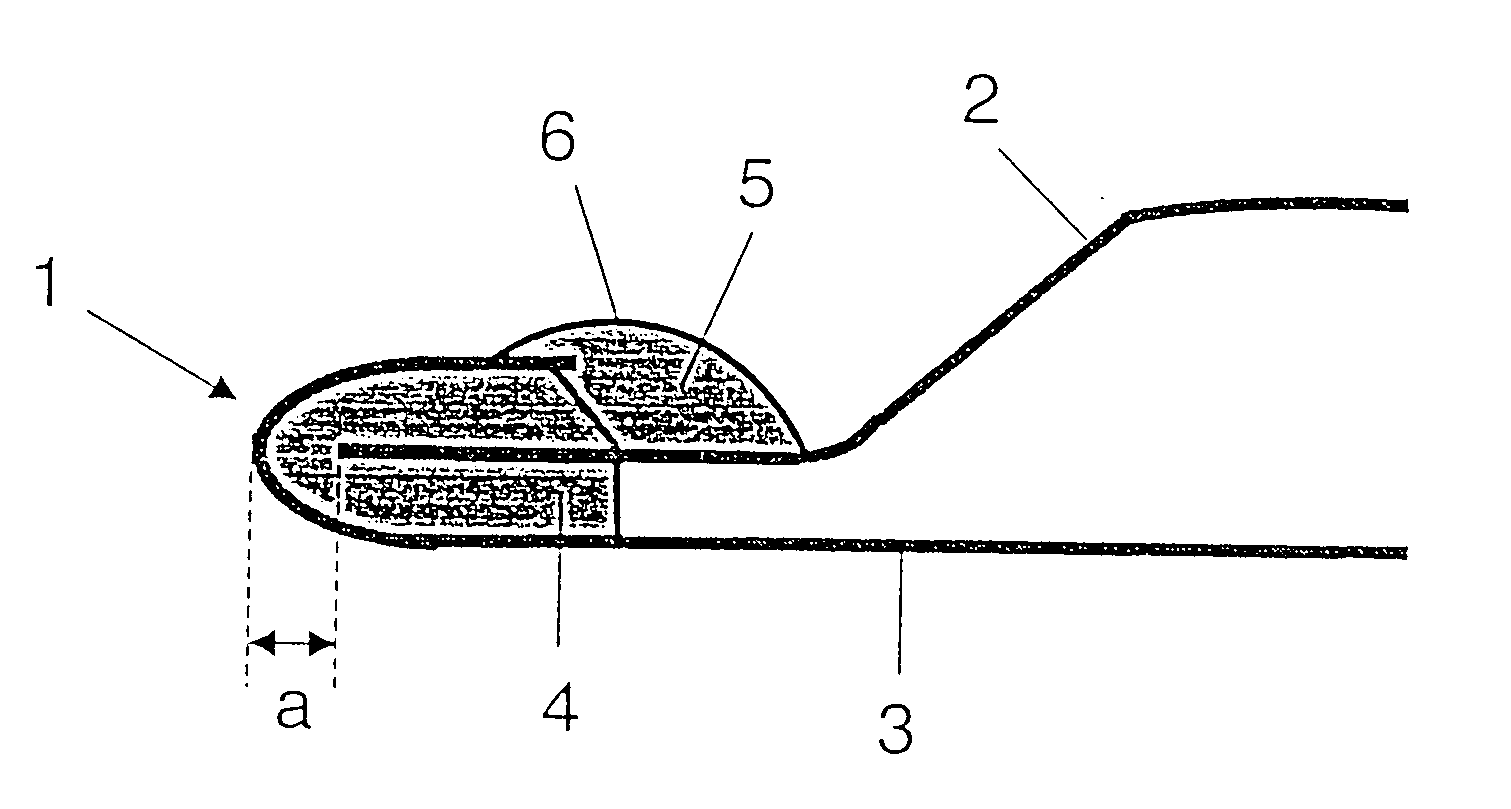Adhesives for vehicle body manufacturing
a technology for adhesives and vehicle body parts, applied in the direction of superstructure connections, layered products, lamination, etc., can solve the problems of weak points in anti-corrosion sealants, unsatisfactory needs, adverse effects on appearance, etc., and achieve substantial production advantages, strong anti-corrosion performance, and strong anti-corrosion performance.
- Summary
- Abstract
- Description
- Claims
- Application Information
AI Technical Summary
Benefits of technology
Problems solved by technology
Method used
Image
Examples
example 2
[0092] Component B of Example 1 can additionally contain at least one initiator for the radical polymerization of activated double bonds in Component A; in this case, partial cross-linking is less possible.
example 3
[0093] Component A, in addition to the binder according to Example 1, contains at least one binder that contains epoxy groups and at least one latent hardener, to improve the adhesion to the metal sheet. Alternatively, both reactive groups, that is, the epoxy groups or acrylate groups, may be present in the same compound.
example 4
[0094] Component A comprises at least one binder containing acrylate groups, at least one UV initiator, and at least one binder containing isocyanate groups, and Component B comprises at least one binder containing epoxy groups, which also has OH groups, and optionally compounds containing additional OH groups, which can be cross-linking agents or polyols, and at least one hardener that is thermally unstable for the epoxy groups.
PUM
| Property | Measurement | Unit |
|---|---|---|
| time | aaaaa | aaaaa |
| time | aaaaa | aaaaa |
| temperature | aaaaa | aaaaa |
Abstract
Description
Claims
Application Information
 Login to View More
Login to View More - R&D
- Intellectual Property
- Life Sciences
- Materials
- Tech Scout
- Unparalleled Data Quality
- Higher Quality Content
- 60% Fewer Hallucinations
Browse by: Latest US Patents, China's latest patents, Technical Efficacy Thesaurus, Application Domain, Technology Topic, Popular Technical Reports.
© 2025 PatSnap. All rights reserved.Legal|Privacy policy|Modern Slavery Act Transparency Statement|Sitemap|About US| Contact US: help@patsnap.com


